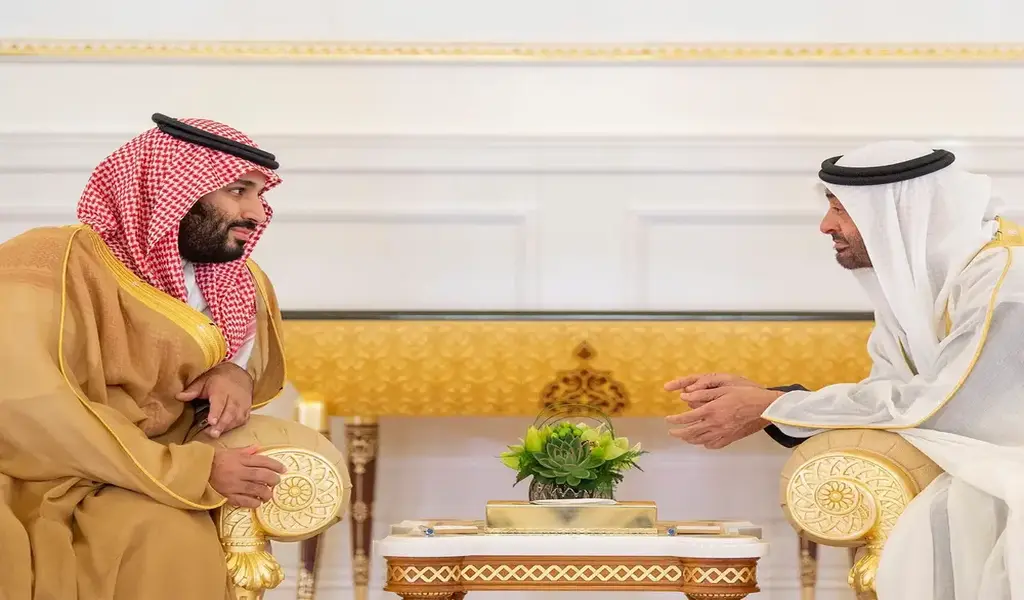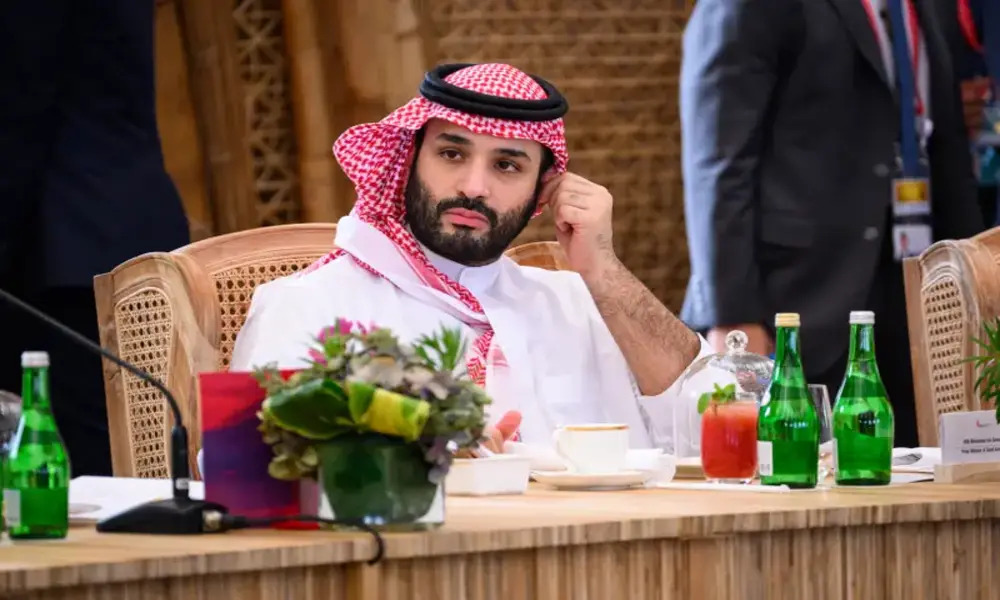News Asia
Saudi Arabia vs. UAE: The Middle East Economic Race – Implications & Origins

(CTN NEWS) – Before Mohammed bin Salman (MBS) emerged as the de facto leader of Saudi Arabia, he was a relatively obscure young prince with an uncertain global future.
However, his rise to prominence was significantly influenced by an unexpected ally: United Arab Emirates (UAE) President Sheikh Mohamed bin Zayed Al Nahyan (MBZ).
This alliance, once strong, has since evolved into a complex and potentially destabilizing rivalry between two influential Middle Eastern nations.
A History of Conflict
The historical roots of tension between Saudi Arabia and the UAE run deep. The 1950s witnessed the Buraimi dispute, a three-year territorial battle where Saudi Arabia aimed to claim an oil-rich oasis near Al Ain.
This dispute fueled anger in the UAE, which was then part of the Trucial States.
In the 1970s, as the British withdrew from the Gulf, a territorial settlement left the UAE feeling aggrieved, with the Saudis gaining control of the Shaybah oil field.
Sheikh Zayed bin Sultan Al Nahyan, the UAE’s founder and former president, harbored a sense of having been outmaneuvered by the Saudis in this resource-rich region.
In the 2000s, tensions escalated further, with disputes ranging from naval standoffs to disagreements over a proposed common Gulf currency.
It wasn’t until the Arab Spring that both nations found common ground, uniting against Qatar, which they believed was supporting various groups.
A New Battle for Regional Supremacy
Today, Saudi Arabia and the UAE are engaged in a battle for regional supremacy, particularly in economic terms. Dubai has traditionally attracted young Saudis seeking job opportunities and global businesses looking to access the Middle East.
However, Vision 2030, MBS’s ambitious plan to diversify Saudi Arabia’s economy and reduce its reliance on oil, poses a significant threat to the UAE’s economic dominance.
Vision 2030 includes massive projects like The Line, a futuristic city envisioned for nine million people along the Red Sea coast. It also targets sectors like entertainment, hospitality, and travel, which are central to the UAE’s economy.
This shift in focus directly challenges the UAE’s economic interests.
Recent developments, such as the introduction of Saudi Arabia’s Riyadh Air and its takeover of Newcastle United FC, demonstrate the intensifying competition between the two nations.
Additionally, Saudi Arabia’s upcoming regulations, which require foreign companies to establish regional headquarters in the country, further complicate the relationship and force the world to choose sides.
Political Tensions
Beyond economic rivalry, political tensions have exacerbated the rift between Saudi Arabia and the UAE.
MBS’s assertive political ambitions, exemplified by the 2017 anti-corruption purge and the Jamal Khashoggi incident in 2018, have raised concerns about his actions and intentions.
The two nations have also clashed on foreign soil, notably in Yemen, where they support opposing factions.
As the Yemeni conflict has escalated into a dire humanitarian crisis, with intense airstrikes and involvement of Iran-backed Houthi rebels, Saudi Arabia has backed the Yemeni government while the UAE has supported a secessionist group in the south.
The Ball Is in Saudi Arabia’s Court
The future of this rivalry largely depends on Saudi Arabia’s actions. While a full-scale blockade like the one imposed on Qatar is unlikely, Saudi Arabia may seek to gain economic leverage over the UAE.
Their differing stances on oil production within OPEC+ and the success of Vision 2030 projects will be critical factors.
However, Vision 2030 faces challenges, including sluggish foreign investment, raising doubts about its success. The world watches closely to see if Saudi Arabia can truly reduce its oil dependence as promised.
Moreover, the consequences of the Ritz Carlton siege have unnerved international investors.
Conclusion
The escalating rivalry between Saudi Arabia and the UAE holds significant implications for the Middle East and global geopolitics. As these two regional powerhouses vie for economic and political dominance, the repercussions may extend far beyond the Persian Gulf.
The unfolding of this rivalry in the coming years will shape the Middle East’s future and profoundly impact international relations, creating a situation marked by more competition and potentially more clashes.
RELATED CTN NEWS:
Iran Arrest 28 Daesh-Linked Individuals For Plotting Tehran Attack On Protest Anniversary
Canadian PM’s Allegations Of Indian Involvement In Sikh’s Assassination: “Five Eyes” Intelligence
Living With Era Of COVID-19: What Does The Future Hold?





























